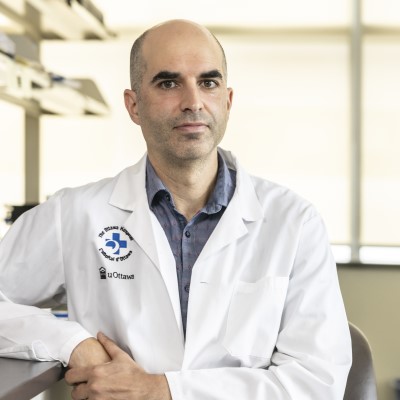 “This research helps us understand and visualize the earliest stages of photoreceptor cell death and could eventually help with the development of new treatments,”- Dr. Pierre MattarRetinal degeneration affects approximately 2.5 million Canadians and is the leading cause of vision loss in people over the age of 55. New research from Dr. Pierre Mattar’s group sheds light on what happens inside retinal cells as they die, in hopes of finding new ways to help these light-sensing cells survive.
“This research helps us understand and visualize the earliest stages of photoreceptor cell death and could eventually help with the development of new treatments,”- Dr. Pierre MattarRetinal degeneration affects approximately 2.5 million Canadians and is the leading cause of vision loss in people over the age of 55. New research from Dr. Pierre Mattar’s group sheds light on what happens inside retinal cells as they die, in hopes of finding new ways to help these light-sensing cells survive.
Previous research has shown that retinal cells experience dramatic changes in the expression of hundreds of genes during stress and degeneration, but Dr. Mattar’s team wanted to understand the bigger picture, by looking at how DNA was packaged and positioned within the cell’s nucleus.
Using a mouse model of retinitis pigmentosa, they found that at the onset of retinal degeneration, DNA becomes tethered to the edges of the nucleus. This stretches out the DNA and makes it more accessible, enabling rapid changes in gene expression. They also found that a protein called lamin A plays a key role in this tethering process.
“This research helps us understand and visualize the earliest stages of photoreceptor cell death and could eventually help with the development of new treatments,” said Dr. Mattar, senior scientist and Clifford, Gladys and Lorna J. Wood Chair for Research in Vision at The Ottawa Hospital and assistant professor at the University of Ottawa.
See the full publication in Cell Death & Disease and Dr. Mattar’s thread on X.
Funders: Canadian Institutes of Health Research, Canada Foundation for Innovation
Authors: Herrera I, Fernandes JAL, Shir-Mohammadi K, Levesque J, Mattar P.
Core resources: Flow Cytometry and Cell Sorting, StemCore, Bioinformatics Core, Cell Biology and Image Acquisition
The Ottawa Hospital is a leading academic health, research and learning hospital proudly affiliated with the University of Ottawa and supported by The Ottawa Hospital Foundation.
